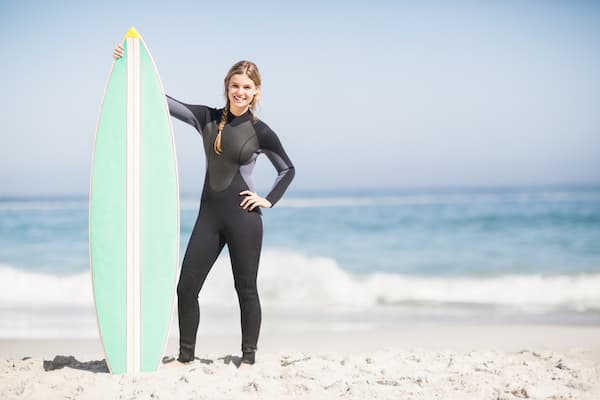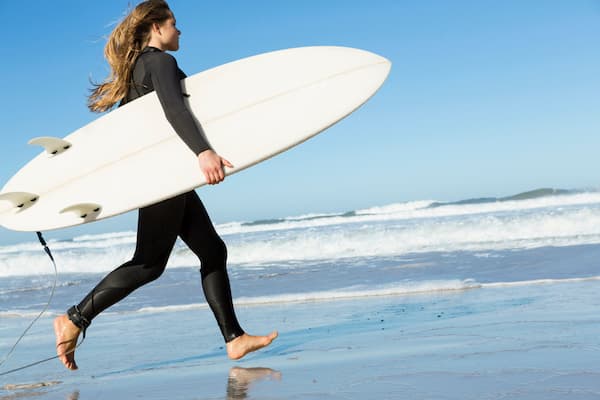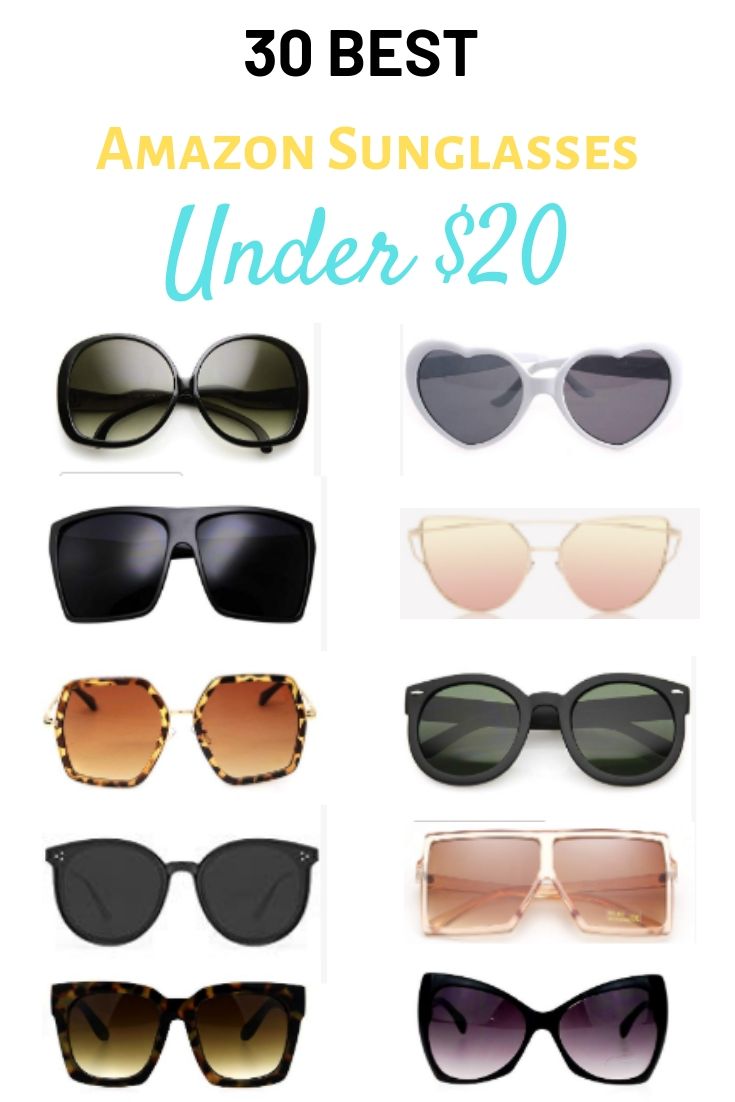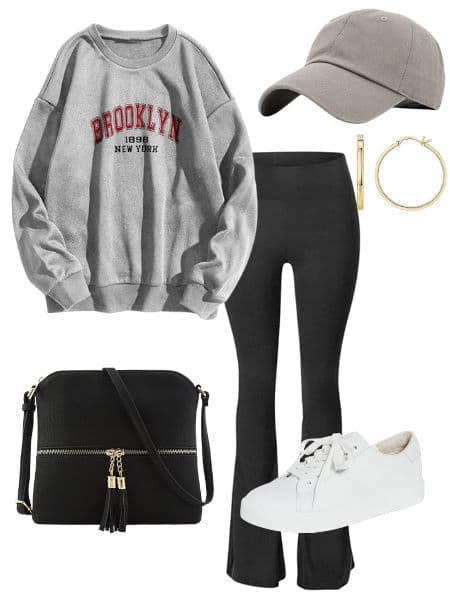Women’s Guide For What To Wear Under a Wetsuit
Ready to get a little adventurous and want to explore water sports for the first time?
Surfing, snorkeling, and scuba diving all sound like fun, but what do you wear underneath your wetsuit?
Proper clothing underneath a wetsuit can make all the difference in comfort, performance, and safety.
Let’s take a closer look at what women should be wearing underneath a wetsuit.

What is a wetsuit?
A wetsuit is a garment that water-sport enthusiasts wear to provide a protective layer and thermal insulation against cold water and rough surfaces.
It’s made of neoprene, a synthetic rubber type that traps a thin layer of water between the skin and the suit. The body heat warms this water, creating an insulating layer that keeps the wearer warm.
While wetsuits are regularly used by professional divers and surfers, they’re also used for other activities such as snorkeling and paddle boarding.
The type of wetsuit you wear and the thickness of the wetsuit should match the activity you’re participating in.
The thickness of a wetsuit can vary depending on the water temperature and it typically covers the entire body, including the arms and legs.
For example, it’s important to wear a full-body suit if you’re surfing in more dangerous, colder waters and you can wear a thinner wetsuit (generally around 2 millimeters thick) if you’re paddleboarding along a river and just need some extra warmth.

How does a wetsuit work?
Oddly enough wetsuits don’t prevent you from getting wet. Yes, you read that right. You’re still going to get wet in a wetsuit.
Because of this, you don’t want to put a wetsuit over your normal everyday clothes.

Additionally, If you’re going on a swim-with-the-dolphins excursion that requires you to wear a rented wetsuit, it’s important to bring a swimsuit with you to wear underneath because the suits provided are worn by many other people.
If you don’t want to wear a bathing suit underneath the wetsuit provided, you could opt for fitted bicycle shorts and a cycling jersey as a base layer.

These work great because both are designed to wick away water. You could also opt for a sweat-wicking sports bra for your upper body instead of the cycling jersey.
The best thing about wetsuits is that they are designed to keep you warm and protect you in cooler waters.
So while you will get wet wearing a wetsuit, there’s only a thin layer of water sitting between your skin and the suit. Your body heat warms that water, so the inside of a wetsuit stays warm.
While the main reason you wear a wetsuit is to regulate your body temperature while you’re in the water, these full-body suits also protect you from marine life and UV rays.

Do women wear anything under a wetsuit?
It’s actually pretty popular for surfers and other sports enthusiasts to “go commando” under their wetsuit.
However, it might not be the best decision for anyone with sensitive skin or those concerned with chafing.
That’s why adding an extra layer between the wetsuit and your bare skin is ideal for many women.

Can I wear a bikini under a wetsuit?
Yes. Many women wear bikini bottoms and a bikini top underneath a wetsuit. This provides added comfort and helps to avoid any discomfort or irritation that may occur from direct contact with the neoprene material.
The clothing worn under a wetsuit should be made of durable, comfortable, and quick-drying materials.
Some popular options for women under a wetsuit include one-piece swimsuits, bikinis, sports bras, board shorts, wetsuit liners, a rash guard, and neoprene shorts.
The clothing chosen under a wetsuit will depend on personal preference, water temperature, and the wetsuit’s thickness.
What to wear under a wetsuit for females
Choosing the right clothing to wear under a wetsuit can make all the difference in comfort and performance. Here are some options for women to wear under a wetsuit:

One-piece Swimming Suits
One-piece bathing suits that are specifically designed for athletics are a great option for women who are on vacation and plan to go snorkeling or swim with dolphins.
With these activities, you’re generally in warmer water and it’s typically a more controlled atmosphere. Therefore, there’s not a huge risk of injury or being cold for extended periods of time.
You should keep it simple. You don’t want a bathing suit that’s really low or high cut. You should also avoid suits with mesh cutouts.
The idea here is to protect your skin from any reaction you might have to the wetsuit.

Two-Piece Swimsuit
The same thing goes for bikinis.
Some female surfers wear sporty bikinis under their wetsuits to protect their most sensitive areas. When doing this, you have the ability to take down the top of the wetsuit while you’re on land without exposing yourself.
When choosing a one-piece suit, you want to keep it simple. Choose a bikini that’s designed for sports instead of a fancier option.
Remember, you can always throw a nicer bikini in your bag to wear if you plan to lounge around at the beach after surfing, but it’s definitely not necessary.
A two-piece swimming suit is also a good option for women who have other activities planned throughout the day.
It’s easy to throw a pair of jean shorts and a casual tank top over a bikini. Then complete the outfit with a pair of cute sandals.
Sports bras and board shorts
Sports bras and board shorts can be good options for women who prefer more coverage and support.
Be sure to choose a sports bra made of quick-drying materials and board shorts made of flexible materials that allow for a full range of motion are the best options for wearing under a wetsuit.
Thermal layer options for under a wetsuit
If you’re going scuba diving or you plan to be in rougher waters, it’s important to choose a thicker wetsuit to protect yourself from colder temperatures.
Also, the additional layer of clothing you choose should provide extra insulation.
To make sure you’re properly protected, avoid wearing a normal swimsuit underneath your wet suit. Instead, choose a full-body jumpsuit or a rash guard.

Surfsuits
Surfsuits or compression shirts with long sleeves provide you with the extra protection you need while you’re in the water and are still sleek enough to wear on their own while you’re on land.

Alternatively, you can choose one with short sleeves and shorts like BELLOO’s one-piece swimsuit with uv protection.
Some other thermal options include:

Wetsuit Liners
Wetsuit liners are thin, form-fitting garments made of materials such as nylon or polyester that are designed to be worn under a wetsuit.
They provide added insulation and can help wick away sweat, keeping the wearer warm and dry. Wetsuit liners can also make it easier to put on and take off a wetsuit.

Rash Guards
Rash guards are form-fitting shirts made of materials such as nylon or polyester that are designed to be worn in the water. They provide added insulation and protect the skin from irritation and rash caused by friction with the wetsuit material.

Neoprene shorts and rash vest: These are designed to provide added insulation to the core of the body. They are made of the same material as the wetsuit and can provide added warmth to the lower back and core.
Tips for choosing the right thing to wear under your wetsuit
Choosing the right clothing to wear under a wetsuit is essential for comfort and safety. Here are some tips.

1. Determine the water conditions
The water temperature determines if you need a thin or thick wetsuit as well as the type of clothing you should wear underneath it. If you’re going to be in colder water, you’ll need a thicker wetsuit and thermal clothing to provide added insulation.
2. Consider the wetsuit thickness
The wetsuit’s thickness will affect the insulation level it provides. Choose clothing that complements the wetsuit thickness to maximize warmth.
For example, if you’re wearing a thicker wetsuit, you may not need as much thermal clothing underneath.

3. Think about personal preferences and activity
Choose clothing that fits your style and the water activity you will participate in. Opt for a one-piece swimsuit or wetsuit liner if you prefer more coverage.
If you prefer a more minimalist approach, a sports bra and shorts may be more your style.
4. Take into account comfort and flexibility
The clothing worn under a wetsuit should be comfortable and flexible, and allow for a full range of motion.
Choose clothing that fits snugly but doesn’t restrict movement. Avoid items that are too loose or too tight.
Additional considerations for women doing water sports
While the right clothing can make a big difference in comfort and performance when wearing a wetsuit, there are some additional considerations that women should keep in mind.

Hair management
If you have long hair, watersports can make it a tangled mess. Consider wearing your hair up in a ponytail or bun. Alternatively, you can wear a swimcap.
If you’re wearing a swimcap, be sure to choose one that’s comfortable, holds all of your hair, and is still tight fitting.

If you’re scuba diving or doing a more intense water sport, a wetsuit hood is the best choice for hair control.
The good thing about wearing a swim cap or a wetsuit hood is that they keep your hair dry.
That way, if you’re going anywhere else after your water sports session, it’s easy to create a cute beachy hairdo.

Protect your skin
Any exposed skin needs to be slathered with sunscreen to protect from UV rays. You should choose an option with a high SPF and reapply it several times throughout the day.

In addition to sunscreen, you might want to consider using petroleum jelly or anti-chafing power on sensitive parts of your body that will come in contact with your wetsuit.
This will help prevent a wetsuit rash.
Hygiene concerns
Wearing a wetsuit can create a warm, moist environment that’s ideal for bacteria and fungus growth. To prevent infection near intimate parts, keeping your wetsuit and clothing clean and dry is important.
Rinse your wetsuit and clothing thoroughly with fresh water after each use, and hang them up to dry in a well-ventilated area.
FAQS
What should you wear under a wetsuit in cold water?

If you know that the temperature of the water you’re going into will be cold, it’s a good idea to opt for a full-body wetsuit liner.
This wetsuit is an excellent choice because it helps regulate your body temperature, while the added layer of protection adds more warmth.

Depending on your necessary movement capabilities, you could also consider adding a wetsuit vest to the mix. Wetsuit vests are slightly different because they are worn over your wetsuit instead of under.
What should you wear under a wetsuit in warm water?
Dressing for warm water activities is a bit easier. In fact, whether or not you wear anything at all depends on whether you own your wetsuit.
If you own your own wetsuit, you don’t necessarily need to wear anything under it. It’s fine to go commando because the suit will keep you warm and protect you from the sun.
However, if you rent a suit or you’re worried about chafing, you can wear any bathing suit under your wetsuit.
Alternatively, you can wear a pair of bike shorts/compression shorts, and a sports bra if you prefer.
You might want to consider whether you’ll be exploring public places after your water sports.
In this case, you might pair bike shorts with a cycling tank or carry additional clothing in your bag for the rest of the day.

What Shouldn’t You Wear Under A Wetsuit?
What you should NOT wear under a wetsuit is just as important as what you SHOULD wear under a wetsuit.
While it’s important to choose the right clothing to wear under a wetsuit, it’s equally important to avoid certain items of clothing that can cause discomfort or injury.
Thick cotton clothing
Thick cotton clothing should be avoided as it does not provide any insulation when wet and can also retain moisture, making it uncomfortable to wear.
When choosing clothing to wear under a wetsuit, opt for quick-drying materials designed for water activities.
A good example of what NOT to wear is regular underwear.
Underwire bras or restrictive lingerie
Underwire bras and restrictive lingerie can cause discomfort and chafing when worn under a wetsuit. They can also impede blood flow, which can be dangerous when participating in water sports.
Instead, choose a sports bra made of quick-drying materials that provide good support and coverage.
Loose-fitting clothing
Loose-fitting clothing can cause discomfort and irritation when worn under a wetsuit. It can also bunch up and cause chafing. Choose clothing that fits snugly but allows for a full range of motion.
Jewelry or accessories
Jewelry and accessories should be avoided when wearing a wetsuit as they can get caught on the material and cause injury.
Additionally, jewelry can become damaged by salt water and sand. Leave the bling at home and opt for a minimalist approach when dressing for water activities.
If you have to wear jewelry, for example, if you have a nose ring that you can’t remove because the piercing is healing, make sure the jewelry you choose is as flat to the skin as possible. Avoid anything dangling.

Should you buy your own wetsuit?
Buying your own wetsuit is certainly an option and has the added benefit that you can go commando under it.
But there are a few things you need to consider before making your purchase:
- Are you sticking to one kind of water sport or would you need to purchase multiple wetsuits?
- Are you someone who will be doing water sports frequently?
- Have you already tried the water sport you plan to commit to?
If you’re a water-sport enthusiast and you know you’ll be sticking to your chosen sport, buying a suit is definitely a better option than renting one.
If you decide to go this route, here are a few of the best suits available:
Best Wetsuits For Females

Seaskin 3MM Shorty Wetsuit
This wetsuit is great for those interested in water activities such as scuba diving and snorkeling. It features a velcro collar, front zipper, durable seams, and UV protection.

Copozz Full Body Thin Wetsuit
If you’re looking for a lightweight and breathable wetsuit, this thinner style would be a great choice.
This wetsuit also provides UV protection and it has the added feature of feet stirrups so you never have to worry about your legs being exposed.

Hevto 3/2mm Wetsuit
This wetsuit is an ultra-affordable option that comes in both men’s and women’s styles. It’s windproof, breathable, and even features reinforced kneepads.
Conclusion
Anytime you’re doing water sports and need to wear a wetsuit, it’s important to plan what you’re wearing under the suit carefully.
In addition to choosing options that protect your skin throughout the day, you should consider the rest of the day’s activities and dress accordingly.
Other posts you might like:









